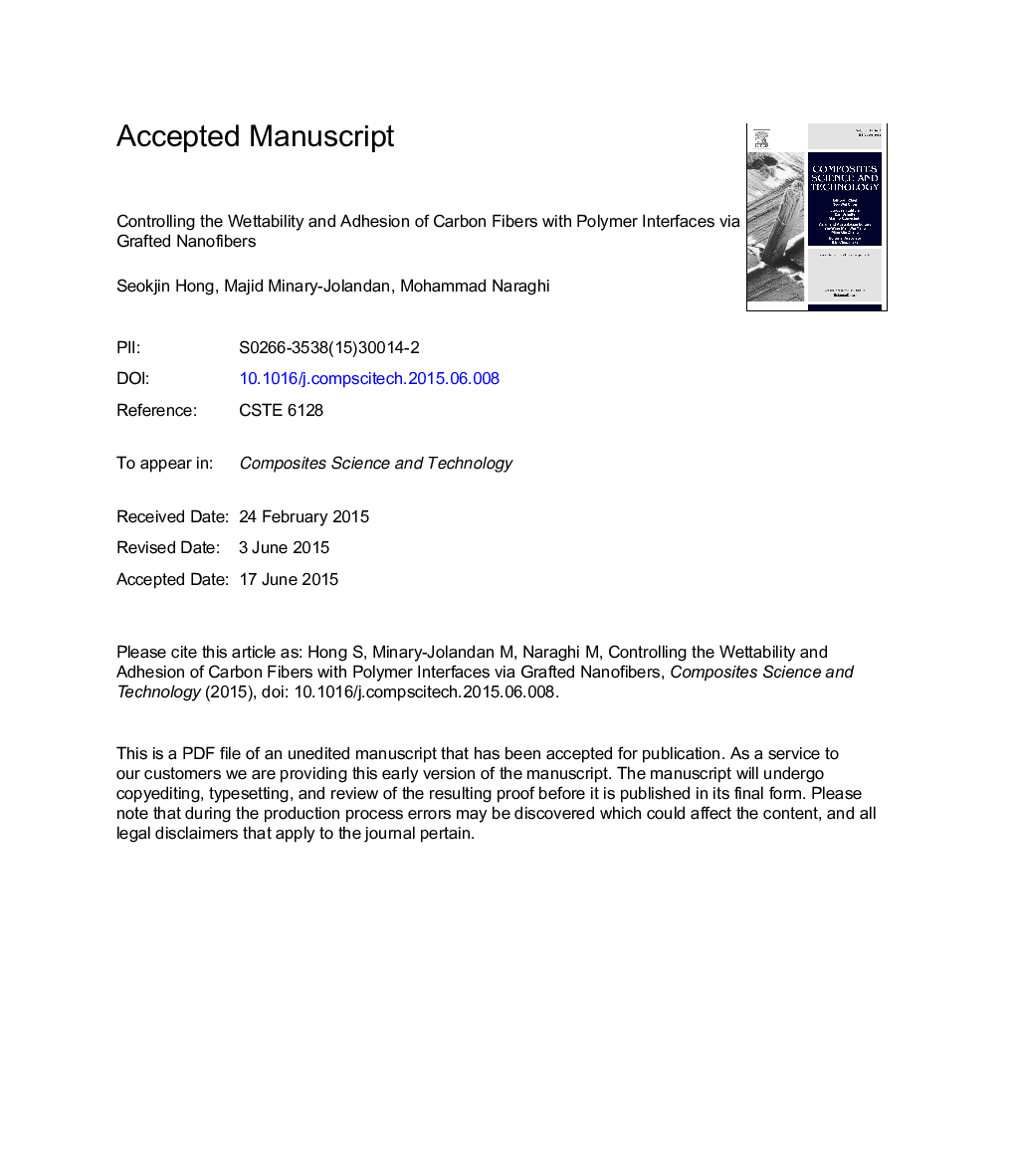| Article ID | Journal | Published Year | Pages | File Type |
|---|---|---|---|---|
| 7215383 | Composites Science and Technology | 2015 | 26 Pages |
Abstract
Interfacial properties in carbon fiber composites is one of the key parameters controlling their structural functionality. Here, we introduce a novel method to engineer carbon fiber-epoxy interfaces, via inclusion of nanofibers, towards higher interfacial strength and energy dissipation. In our method, thermally stabilized polyacrylonitrile (PAN) nanofibers are grafted onto carbon fibers via electro-spinning process, followed by nanofiber consolidation via solvent vapor and thermal treatment. These treatments partially dissolves nanofibers along the nanofiber-fiber interface and trigger entropic elasticity in nanofibers, thus, increasing the nanofiber-fiber interactions. The hybridization of carbon fibers with PAN nanofibers increased the interfacial shear strength (IFSS) by â¼48%, from 10.8 ± 2.6 to 15.9 ± 4.9 MPa. Postmortem fractography points to mechanical interlocking between nanofibers and epoxy and reinforcing effects of nanofibers in matrix as root causes of IFSS enhancement. As a result of adding nanofibers to carbon fiber, junction failure mode changes from a dominantly adhesive failure (at epoxy-fiber interface) to dominantly cohesive failure, and failure plane slightly shifts away from epoxy-fiber interface to within the epoxy. Compared to other types of whiskers grown on carbon fibers, such as CNTs, the method proposed here requires low temperatures (below 300 °C), during which no surface damages are expected to accumulate on carbon fibers.
Keywords
Related Topics
Physical Sciences and Engineering
Engineering
Engineering (General)
Authors
Seokjin Hong, Majid Minary-Jolandan, Mohammad Naraghi,
